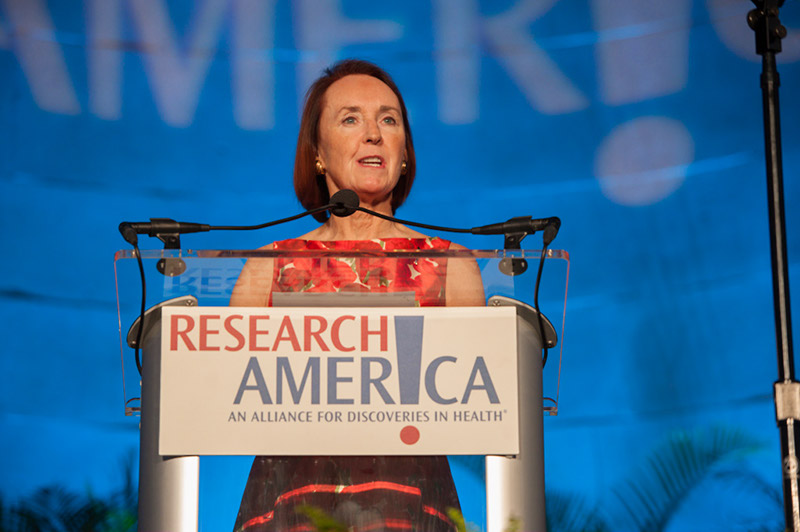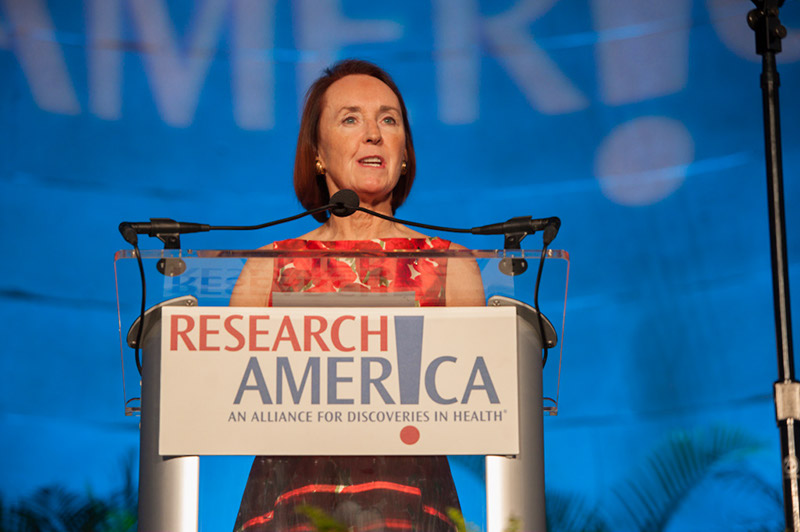Important Signals Are Emerging amidst the Noise

 Dear Research Advocate,
Dear Research Advocate,
Just as attention was shifting to the FY18 budget year, we are hearing that a year-long continuing resolution is not a forgone conclusion for FY17. We understand that the pending FY17 omnibus package includes a $2 billion increase for NIH as well as increases for CDC, NSF and FDA (unfortunately not AHRQ). This is a tight window of opportunity — members of Congress must hear from you now in support of passing an FY17 omnibus bill.
As for FY18, as I noted last week, the President’s budget blueprint proposed deep cuts to NIH and our other research agencies. Since then, the high volume of bipartisan cries of outrage may signal better funding outcomes in Congress, although nothing is assured. A comprehensive article on the President’s budget includes my observation that the President cites a lack of evidence as the reason for many of his budget cuts. There is certainly evidence that NIH and our nation’s other research agencies provide a massive return on investment; we need to make sure that evidence is too persuasive and pervasive to be ignored. A terrific NYT op-ed by former NIH and NCI Director and 2016 Research!America Legacy Award recipient, Dr. Harold Varmus, provides compelling arguments. In a recent issue of The Scientist, Research!America’s Suzanne Ffolkes describes our efforts to get the word out.
Rep. McKinley (R-WV) discussed the importance of advocacy at our Annual Meeting last week. A steadfast research champion, the Congressman joined several colleagues in penning “Dear Colleague” letters on NIH and NSF funding, which are now circulating to gain signatories. An AHRQ “Dear Colleague” letter, led by Rep. Beyer (D-VA), is also recruiting signatories. Letters like these are the signals we must strengthen in order to overcome the noise all around.
White House Press Secretary Sean Spicer defended the President’s massive 19% proposed cut to NIH, indicating that the savings can be produced by achieving efficiencies and reducing duplication. But the budget’s proposed elimination of the Fogarty International Center wouldn’t be efficient; just the opposite. Research!America’s Ellie Dehoney voiced our concern in NBC News. Please help us make the case for global health tomorrow, World TB Day. Check out our TB and Global Health fact sheets and spread the word using #WorldTBDay on social media.
Last week, I was given a reprint of the classic, The Usefulness of Useless Knowledge by Abraham Flexner in 1939, with a companion essay by Robbert Dijkgraaf. This quick read renewed my commitment to what former NIH Director Elias Zerhouni calls the “portfolio” approach to investing in research — spreading dollars to capture both long and short term value. That doesn’t mean it’s a mistake to look for operational efficiencies or synergies. It means that in science, a narrower focus is not necessarily a more cost-efficient or cost-effective one.
With so much noise obscuring signals on various topics this week, little media attention was paid to House and Senate hearings on FDA user fees. Yet, the timely reauthorization of these fees is crucial to the agency and to patients. If your organization is a Research!America member and you want to get the word out on a user fee priority (or any other research-related issue), consider becoming our next guest blogger! Contact Anna Briseno ([email protected]) for information.
Finally, I am delighted to share videos of the incredible speeches from honorees, speakers and presenters at last week’s Advocacy Awards Dinner. Be sure to post and circulate these links to your contacts. They will be inspired as we all were that evening.
Sincerely,
Mary Woolley




